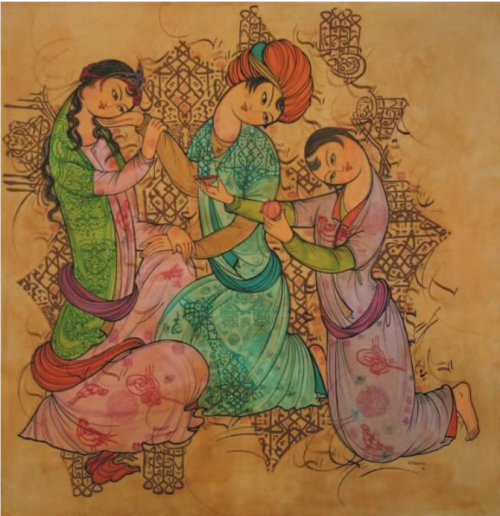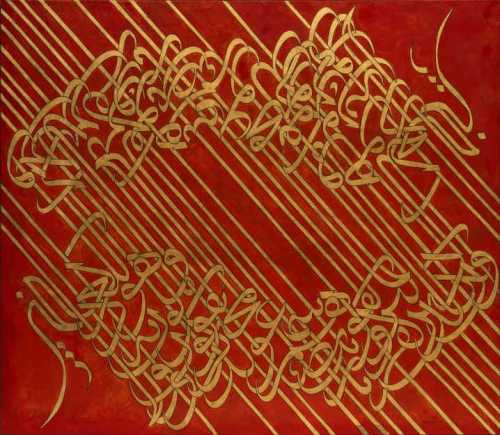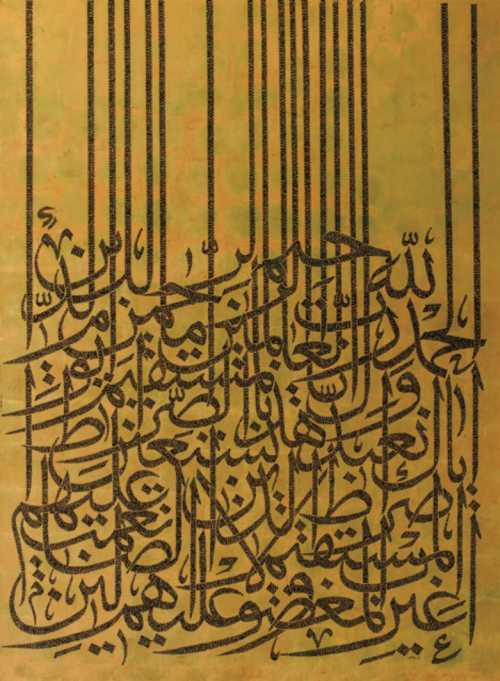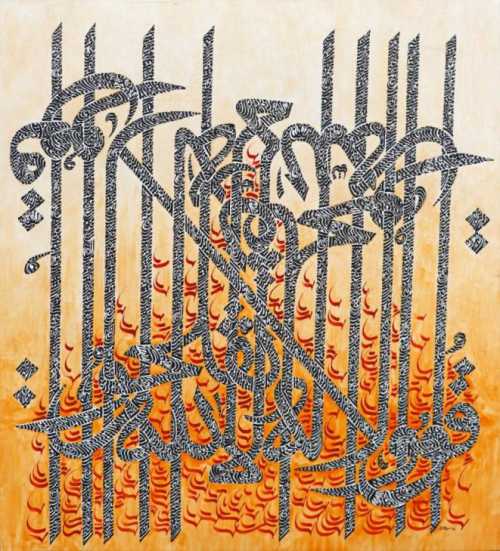- Untitled 2012
- Oil on canvas
- Painting
- 100 * 100 cm
- Tabrizi employs miniature painting techniques and incorporates Persian and religious motifs in large-scale paintings which are warmly received by the public. These paintings feature pure gold, orange, azure, turquoise, green, and other colours along with black complementary lines. Large-scale works of this kind were mounted on the walls of Nour Auditorium at the Hilton Hotel in 1969 to celebrate 2500 years of Persian history. These works can be considered to constitute the eighth period of Tabrizi's work. They are mostly images of riders on calm horses facing each other, or of lovers found in Persian paintings recast in a fresh form in his work. Instead of saturating his work with illumination and page decoration, Tabrizi hints at Persian miniature painting by using inscriptions in the form of broken Nasta'liq to fill the negative space of the paintings. Here, he realizes an important innovation in creating abstract forms in free compositions through calligraphy. Looking at the suspended calligraphy-based motifs of previous works, Tabrizi comes up with the idea of an abstract use of them in individual compositions. This is perhaps the most successful period of his career
Artwork Description
Signed and dated in Farsi 'S. Tabrizi 91' (lower right)
Realized Price
12,771 USD
Min Estimate
10,210 USD
Max Estimate
14,382 USD
Average Artwork Worth
+27.837%
Average Growth of Artwork Worth
Sales Performance Against Estimates
Average & Median Sold Lot Value
2021 - 2025
Performance vs. Estimate
2021 - 2025
Sell-through Rate
2021 - 2025
Similar Artworks

Performers
Estimation
£15,000
20,000 USD
-
£20,000
26,667 USD
Realized Price
£21,760
29,013 USD
24.343%
Sale Date
Bonhams
-
25 November 2025

40 Love
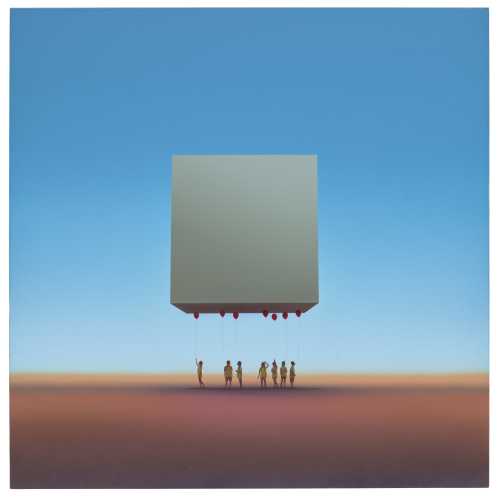
Untitled
Estimation
£12,000
16,667 USD
-
£18,000
25,000 USD
Realized Price
£17,780
24,694 USD
18.533%
Sale Date
Phillips Auction
-
26 June 2025
